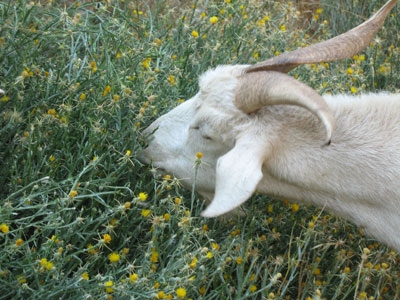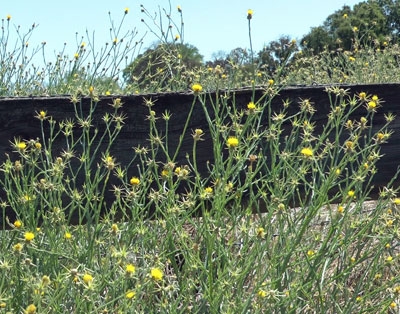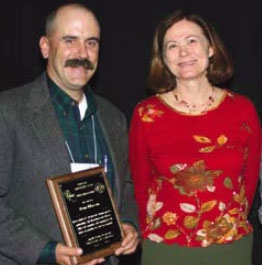
Posts Tagged: Roger Ingram
It's raining in California, but drought concerns haven't been quenched

A story in the Los Angeles Times this week opened with the concerns of cattle ranchers. Without winter rain rangeland grass doesn't grow. Ranchers must decide whether to buy expensive feed or cull their herds to weather the drought.
"Their struggle is a bellwether for California's $45 billion agriculture sector," wrote reporter David Pierson. The repercussions will be felt beyond the state's borders. "The Golden State produces nearly half of all U.S.-grown fruits, nuts and vegetables and is the nation's leading dairy and wine producer."
Pierson quoted Doug Parker, director of the UC California Institute for Water Resources, in his article.
"The agriculture industry is definitely hit the hardest by drought," Parker said. "In California, agriculture uses 80 percent of water in the state. It's a major input for their business and hits their finances and employment directly."
The San Luis Obispo Tribune reported on drought hardships for SLO County fruit and vegetable farmers. Growers are facing increasing irrigation costs and taking steps to reduce salt buildup in the soil.
"The drought forces growers to prioritize crop cycles,” said Mary Bianchi, UC Cooperative Extension adviser. “What do you plant, and what do you leave fallow?”
In Stanislaus County, ranchers are expressing concerns about a trend among farmers toward planting almonds, reported the The Modesto Bee. Ranchers are worried the spread of almonds, walnuts an other high-value crops could strain their limited groundwater, drive up land prices and intrude on their way of life.
“It's not hard to understand why (farmers are planting more almonds),” said Roger Duncan, UCCE advisor. “It's very profitable.”
It was Duncan who provided the rough figures on almond profitability during the first day of the ninth annual summit of the California rangeland Conservation Coalition recently, wrote Bee reporter John Holland. Duncan said the net is even better for walnuts, which are not as extensive but still have had major growth in acreage. He also said the nut boom could be limited by a shortage of water and land.
The Drovers Cattle Network reported that cattle ranchers are seeking strategies for surviving the drought.
According to the article, rancher Billy McDonald's wife, Aileen, said she learned from UC Cooperative Extension farm advisor Glenn Nader that "you need to set a date, like if it doesn't rain by a certain date, to start culling. That's really important."
Also as part of the story, Roger Ingram, UCCE advisor in Placer and Nevada counties, advised ranchers to develop a drought plan.
Ingram warned against overgrazing and emphasized the importance of leaving enough residual dry matter in the ground to enhance seed germination and minimize soil erosion. With more bare ground, water would run off instead of soaking in, he said, and there would be less organic matter to feed soil microbes, resulting in fields being overrun by undesirable plants such as medusahead and yellow starthistle.
"Your grazing strategy should be take half, leave half," he said.
For those who are on irrigated pasture with limited water supply, UCCE advisor Larry Forero said fields are the driest in the summer but can get by with less water in the fall, so irrigate as close to evapotranspiration as possible and then stop irrigating. He also advised leaving four to five inches of stubble to facilitate pasture growth in the fall, should it rain or irrigation water become available.
Goats can help with yellow starthistle control

Yellow starthistle is thought to have been introduced into California from Chile during the Gold Rush. The weed readily took hold in California valleys and foothills, thriving in areas where the soil has been disturbed by animals grazing, road construction and wildland firebreaks. Today, yellow starthistle is a very common sight in vacant lots and fields, along roadsides and trails, in pastures and ranch lands, and in parks, open-space preserves and natural areas.
Capable of growing six feet tall and bearing flowers surrounded by inch-long spines, yellow starthistle reduces land value, prevents access to recreational areas, consumes groundwater and poisons horses. (Yellow starthistle isn't all bad. Beekeepers have found that it can provide an important late-season food source for bees.)

That's where goats can come in. Goats will eat yellow starthistle at all phases of growth, including the mature, spiny stage, when it is not palatable to other browsers and grazers.
"When goats eat yellow starthistle, they open up the canopy and allow sunlight to hit the ground," said Roger Ingram, UC Cooperative Extension natural resources advisor. "That allows other, more beneficial seeds to come up and grow. If you can get other plants growing in there, the competition will choke out yellow starthistle."
Landowners can raise goats themselves and direct them to areas of starthistle infestation with portable fencing, or they can lease the animals exclusively for vegetation control. More information on yellow starthistle management is available from the UC Integrated Pest Management Program.
View the video below for more information on goats' browsing preferences.
Read a transcript of the video.
GoatsYST
Local food and farming conference a sell-out
Nevada County's first Sustainable Local Food and Farm Conference, slated for this Saturday, is already a sell out, testifying to the growing interest in local food production in this Sierra Nevada foothill community.
Strong grassroots efforts to link consumers with farmers are making Nevada County a force in the foothills, according to an article about the conference in The Union.
“It's one of the more advanced areas. There's kind of that mindset already here,” the article quotes Roger Ingram, county director and farm advisor for UC Cooperative Extension in Nevada, Sierra and Placer counties.
Keynote speaker at the event is Joel Salatin, a self-described "Christian-libertarian-environmentalist-capitalist-lunatic farmer." Salatin's Virginia farm is featured prominently in Michael Pollan's book The Omnivore's Dilemma and the documentaries Food Inc. and Fresh.
Salatin’s philosophy of farming emphasizes healthy grass on which animals can thrive in a symbiotic cycle of chemical-free feeding, according to Wikipedia. Cows are moved from one pasture to another rather than being centrally corn fed. Then chickens in portable coops are moved in behind them, where they dig through the cow dung to eat protein-rich fly larvae while further fertilizing the field with their droppings.
According to the Union article, the Nevada local food movement gained steam in 2005 when a small band of farmers, advocates and citizens - including UC Cooperative Extension in Nevada County - started the Local Food Coalition, and from that Nevada County Grown.
“There just seems to be this great burgeoning interest in this,” said Jeri Ohmart, Food Systems and Organic Outreach Program Assistant for the University of California's Sustainable Agriculture Research and Education Program, based at UC Davis.

Nationally known farmer Joel Salatin is a keynote speaker at the local food conference.
Small-scale lamb producer featured in Sac Bee
Dan Macon, a Placerville lamb rancher who last year received UC's Pedro Ilic Award for outstanding farmer, was the subject of a human interest feature in today's Sacramento Bee.
The article said Macon is among Placer County's most successful and sustainable meat purveyors. He sells his product to local restaurants and as part of the Sierra Foothills Meat Buyers Club.In addition to producing meat, Macon contracts with other farmers to "mow" their cover crops.
Director of UC Cooperative Extension in Placer and Nevada counties, Roger Ingram, told reporter Niesha Lofing that such sustainable farming efforts are what set Macon apart.
"He thinks of the community even before himself," Ingram was quoted. "I think that Dan symbolizes that there is potential out there (for small farm operations)."
Another example of the rancher's innovation and diversification is classes he offers to the community. On May 23, a half-day class at the ranch includes lessons in pasture management, livestock handling and predator protection. Also, local chefs will teach Argentine asada-style cooking. The class is $30 per person, dinner is $50 per person and the package can be purchased for $75. Reservations, required by May 13, may be made on Macon's Flying Mule Farm website.

Dan Macon, with Shermain Hardesty of the Small Farm Program, receives the Pedro Ilic Award.
